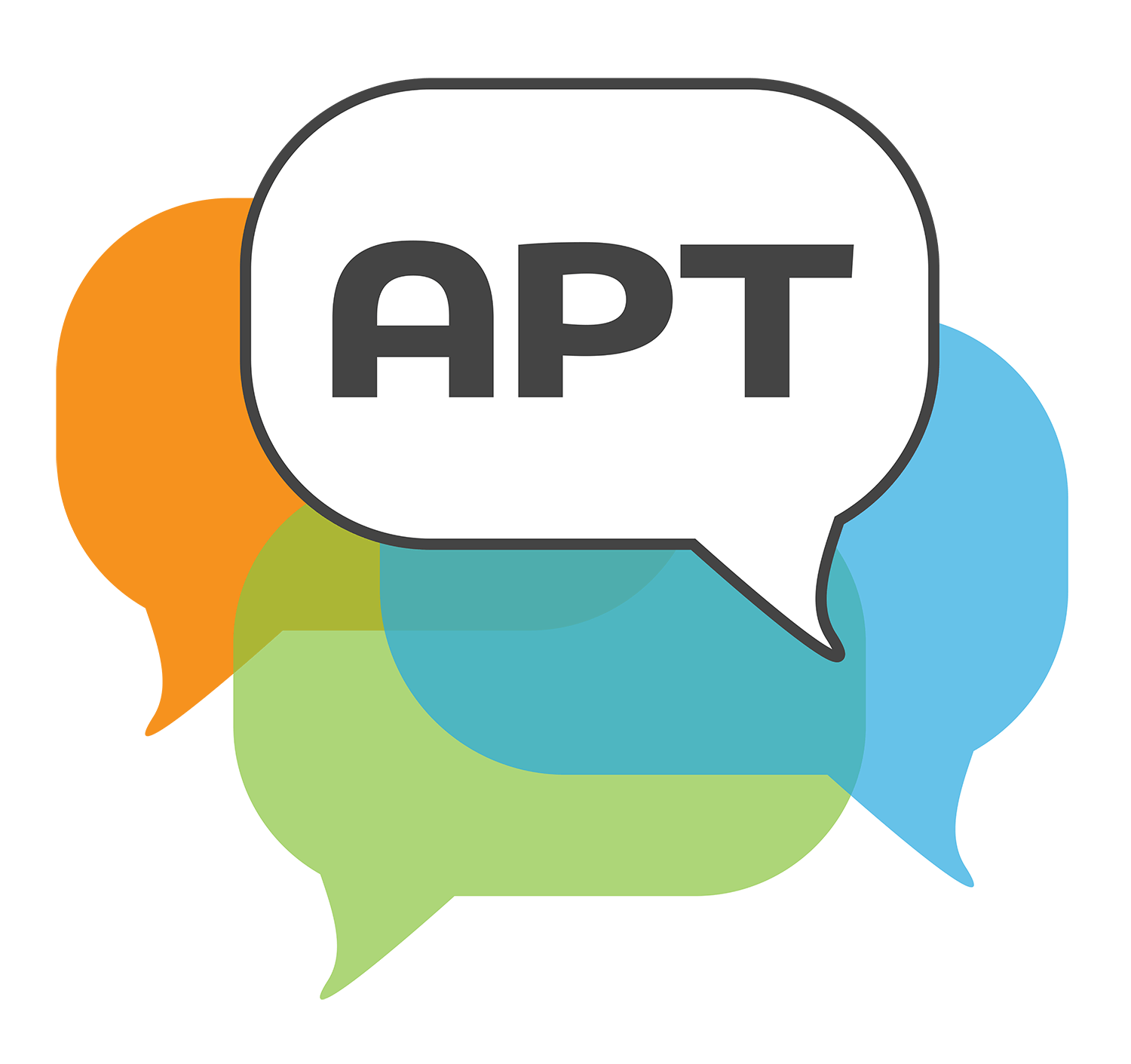Getting Started
Planning and Preparing for APT
The productivity of student talk in your classroom will depend a great deal on how carefully you've planned in advance. Not all opportunities for talk need to be highly intentional; the more comfortable you are having students engage in APT, the more frequently you will ask your students to talk to each other almost as a reflex. But when core content is being introduced and you have very specific learning outcomes you are targeting, advance planning will make all the difference in meeting your goals for a lesson.
Read more below about:
ASKING DISCUSSABLE QUESTIONS
Engagement in Academically Productive Talk begins with questions. These questions can be generated by students or posed by teachers. As students acquire facility in asking each other questions, it is important that teachers gradually release responsibility to students. Encouraging students to ask questions encourages participation as well as meaningful reflection on the content. More often than not, students ask authentic questions–questions about things that they are genuinely interested in thinking about with their teacher and peers.
Discussable questions must be open-ended: if there is a single right answer and a single way to get that answer, then there is nothing to discuss. Students must have available evidence and resources to support their reasoning processes as they seek to answer open-ended questions. But if the answer does not require reasoning— if it can simply be looked up— then there is nothing to discuss. In formulating discussable questions, teachers must consider both criteria:
Is the question open-ended? and
Will students have access to resources that will allow them to formulate answers to the questions?
VIDEO EXAMPLES that include DISCUSSABLE QUESTIONS:
Notice that the question is one that asks students to establish intent rather than fact, and students are asked to draw on historical documents to support their arguments.
The question "are seeds alive?" is discussable because seeds have some properties that are associated with things that are living, but lack other properties. The teacher is clear that students' positions should be supported with evidence (proof).
In this discussion, students who have been reading about the Titanic are asking the questions—the two shown here are both counterfactual, and thus discussable.
In mathematics, problems often do have single right answers, so just asking what the answer does not stimulate discussion. However, this teacher opens discussion by asking students what they were thinking if they got the wrong answer, and then asking about the different methods students used to get the right answer.
The clip above is from:
How many squares are in the border of a 10x10 grid?
Math • Middle School Algebra
PRE-DISCUSSION:
Strategies to Increase Student Engagement
Teachers can help students engage in discussion by structuring pre-discussion activities. Such activities set students up for a more productive discussion.
Pre-discussion activities allow students to engage more deeply with the material and understand their peers’ ideas during the discussion. For example, teachers could ask students to prepare questions that they would like to discuss during a small group problem-solving activity or generate questions about a science demonstration. Such activities set the stage for highly productive talk in whole class or small group discussions.
STRATEGY 1
Assign relevant text to students to read prior to discussion.
Prior to this discussion, students used the active reading approach, Question and Response, to understand the text in “Getting Away with Murder: The True Story of the Emmett Till Case.” Students were expected to use textual evidence in an authentic discussion with their peers.
The clip above is from:
Emmett Till: His Life as a Black Teenager in 1955 Chicago
Language Arts • Grade 7
In this discussion about the expansion of the Islamic Empire, the teacher opens up the discussion by referencing the prior reading and annotation of the document that will be the focus of this lesson.
STRATEGY 2
Give students time to formulate arguments and evidence in writing prior to the discussion.
Prior to a whole class discussion, students are given time to independently write out their arguments and evidence on whether a seed is dead or alive.
STRATEGY 3
Ask students to prepare questions to pose during the discussion.
In this clip, students utilize questions they prepared prior to the discussion.
STRATEGY 4
Model the activity students will be doing and mention they will need to talk in small groups.
Before students break into pairs to sort the words, the teacher models with the whole class what they will be doing. Before students break into pairs to sort the words, the teacher models with the whole class what they will be doing.
STRATEGY 5
Review what was done in previous classes to refresh students’ memories before they begin discussion.
The teacher starts the lesson by reviewing the previous math workshop and the major observation that he wants students to remember for this lesson, that the same number can be decomposed in different ways.
Students lead their own review of previous material by referencing their notes.
In this clip, the teacher asks a shared knowledge question so that members of the group could be on the same page about what they had previously learned.
Two last points that are frequently overlooked:
Preparing Materials for Discussion
One of the most overlooked parts of planning for discussion is the preparation of materials that the teacher intends for students to discuss. Materials must be curated, adapted, and scaffolded. Although academically productive talk in each subject area draws on different materials, across the board these materials should be accessible to students if they are to engage in the interpretive work of discussion. If students must spend all their time merely parsing what the text says, or understanding the directions, they will not have sufficient time to engage in meaningful discourse.
Explicit Instruction
The final way that teachers can prepare students for discussion is through explicit instruction. Explicit instruction involves teachers directly instructing students about asking questions or argumentation, including the parts of an argument (i.e., claim, evidence, and reasoning) as well as how to evaluate the strength of an argument by considering the validity and relevance of the evidence and reasoning. As students gain experience with discussions, the teacher can shift to guided practice, or activities that allow students the opportunity to practice constructing strong arguments as well as challenges and counter arguments that critique the evidence and reasoning presented by others. Facility in asking questions and providing reasoned responses also enables students to take on interpretive authority in their own learning.
These students are new to debate, the teacher provides instructions throughout the discussion so students can be accustomed to the various parts of the debate and their role in it.


